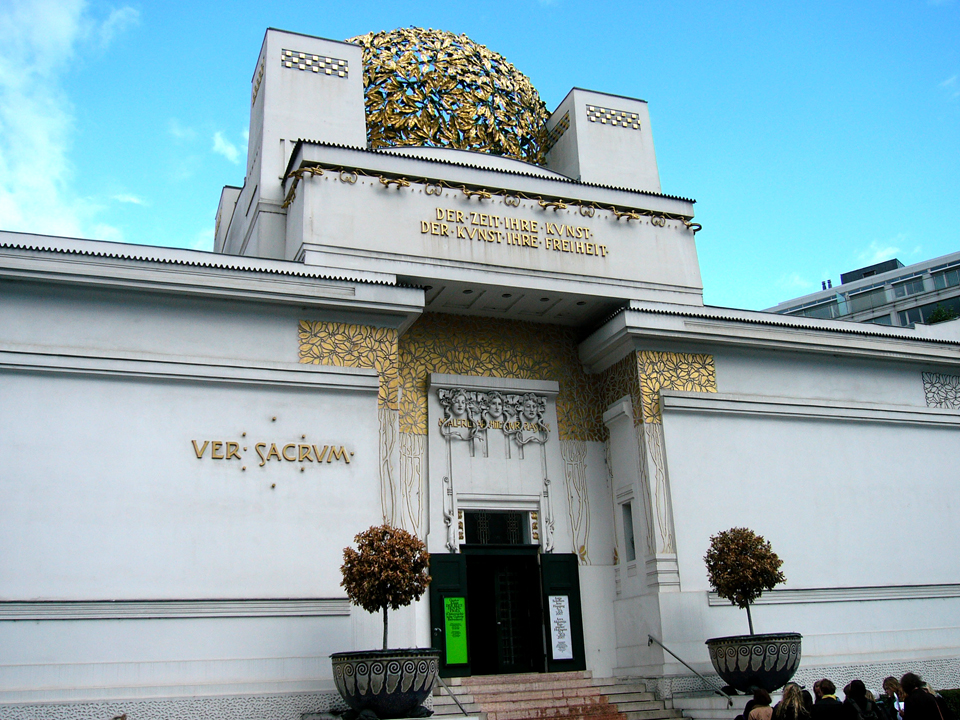
In its current form, the Secession exhibition gallery is independently led and managed by artists.

In 1905 the group itself split, when some of the most prominent members, including Klimt, Wagner, and Hoffmann, resigned in a dispute over priorities, but it continued to function, and still functions today, from its headquarters in the Secession Building. Their official magazine was called Ver Sacrum ( Sacred Spring, in Latin), which published highly stylised and influential works of graphic art. Their most influential architectural work was the Secession Building designed by Joseph Maria Olbrich as a venue for expositions of the group. They resigned from the Association of Austrian Artists in protest against its support for more traditional artistic styles. Take a walk around the building to see the owl designs by Koloman Moser.The Vienna Secession ( German : Wiener Secession also known as the Union of Austrian Artists, or Vereinigung Bildender Künstler Österreichs) is an art movement, closely related to Art Nouveau, that was formed in 1897 by a group of Austrian painters, graphic artists, sculptors and architects, including Josef Hoffman, Koloman Moser, Otto Wagner and Gustav Klimt. Be sure to visit the bookshop with a good selection of Secession and Jugendstil related books and materials. Museum admission also includes access to Klimt’s Beethoven Frieze in the basement. This museum lives up to the Secession motto “To every age its art- To every art its freedom” by continuing to exhibit the work of contemporary artists. Click on an artist to view a gallery of their work.

If you would like to contribute an image, please contact me. I am constantly updating these galleries and adding new artists. Secession Museum– Home of the original Secession building in Vienna. This gallery features the work and biographies of leading German and Austrian artists working in the Secession, Jugendstil, and Art Nouveau style. The Albertina Museum – The Albertina Museum in Vienna has the best collection of Viennese Art Nouveau graphics as well as Wiener Werkstätte postcards. Of particular interest is their collection of Dutch Art Nouveau book design and their excellent library.īelvedere Museum -The Belvedere holds Vienna’s largest collection of oil paintings by Gustav Klimt as well as some works by Schiele. The Wolfsonian Museum– Nestled in beautiful Miami Beach, this museum has a vast collection of Art Nouveau graphics and posters. Superb collection of Klimt and Schiele and the home of Klimt’s Portrait of Adele Bauer. Featuring work by Klimt, Egon Schiele, Koloman Moser, Otto Wagner, Max Fabiani, Joseph Maria Olbrich and Josef. The Neue Gallery – This New York museum is America’s answer to the Leopold Museum. Conceived by Gustav Klimt, Max Kurzweil and Ludwig Hevesi, Ver Sacrum was founded in 1898 as the official magazine of the Viennese Secession, which had sprung into being the previous year. Leopold Museum– The Leopold Museum in Vienna specializing in Klimt, Egon Schiele, Kokoschka and the Vienna Secession. According to the materials from which it is made, each individual object is also associated with the respective part of the MAK Collection. The Secession Building is one of the foremost examples of Art Nouveau in Vienna, completed by Joseph Maria Olbrich in 1898, it was designed as an exhibition hall for artist Gustav Klimt and his contemporaries to exhibit their rule-breaking paintings in the new ‘Secession’ style. Among other things, the MAK owns the most comprehensive collections of furniture, objects, and designs by Josef Hoffmann. The MAK is also home to the world’s largest museum collection of Wiener Werkstätte objects, covering the association’s entire productive period. Museum of Applied Arts (MAK) – Perhaps the best museum in the world for Secession and Wiener Werkstätte period objects.

Here is a list of museums with permanent collections on Vienna Secession, Jugendstil and art Nouveau related objects.


 0 kommentar(er)
0 kommentar(er)
